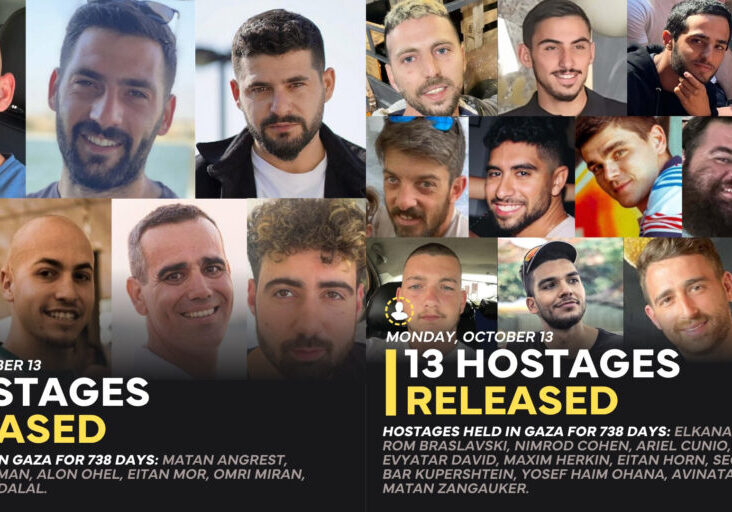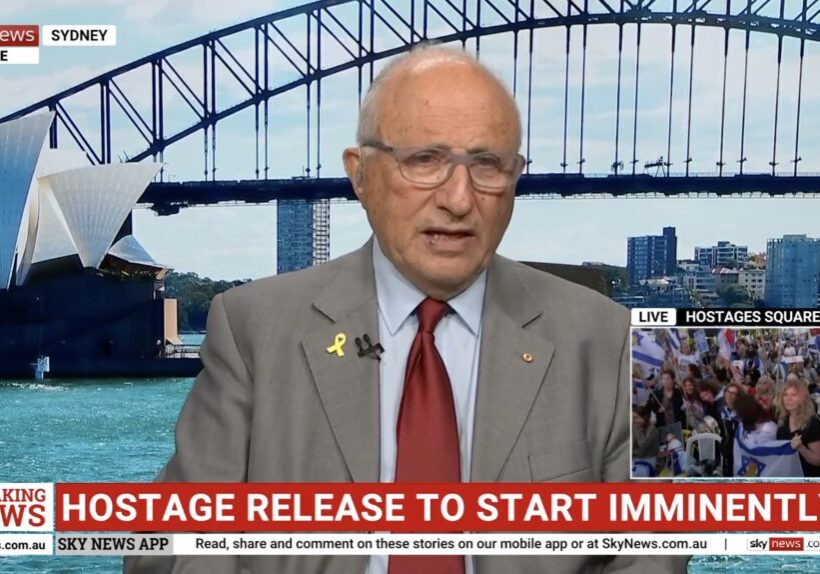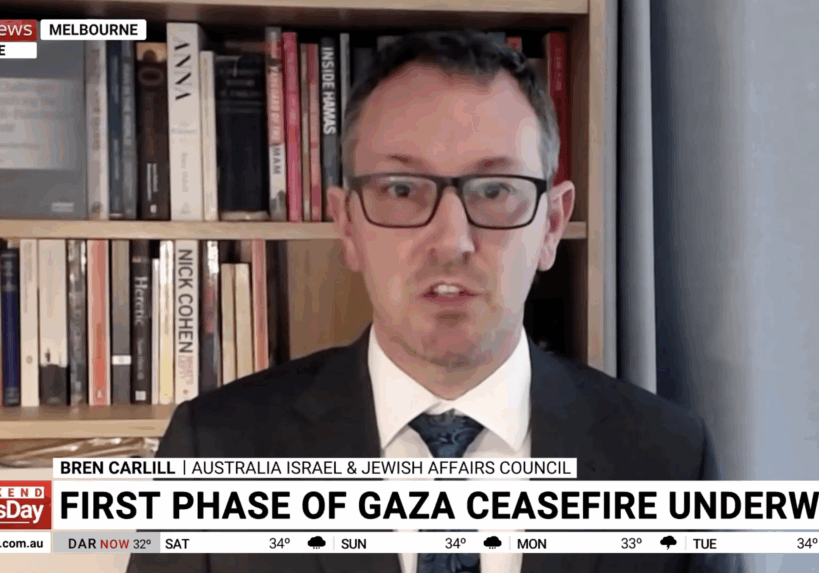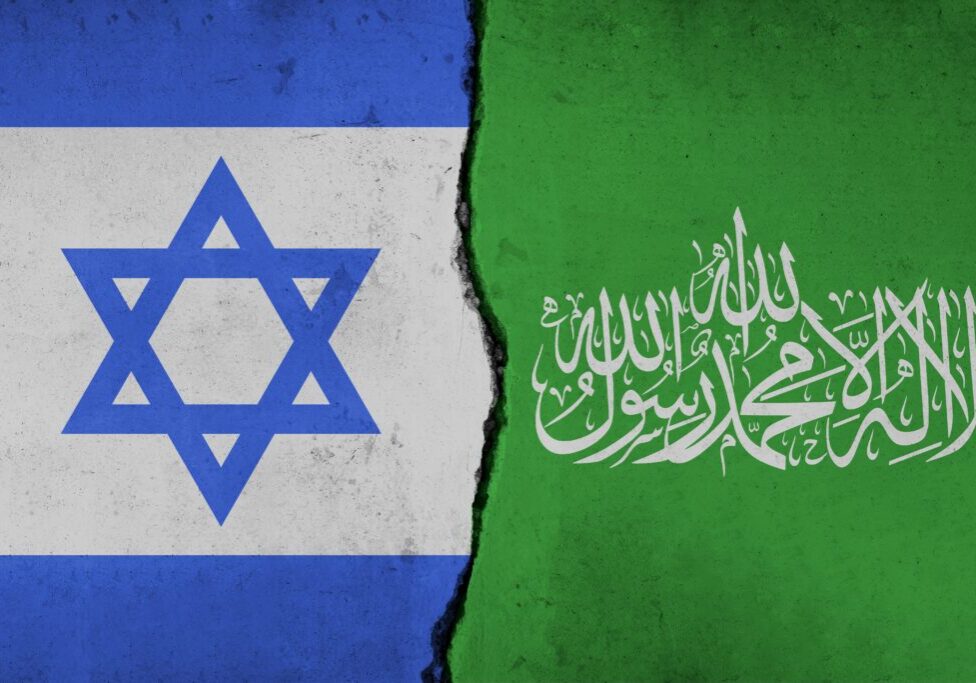Australia/Israel Review
Hamas’ “victory” narrative
Feb 25, 2025 | Meir Amit Intelligence and Terrorism Information Centre

The announcement of the ceasefire in the Gaza Strip, even before it went into effect on January 19, 2025, provided Hamas with an opportunity to start promoting a “victory” narrative over Israel in the Gaza Strip War, which they refer to as Operation al-Aqsa Flood, which began with the Hamas terrorist attack and massacre on October 7, 2023.
Official statements from Hamas and its senior figures, amplified by the movement’s official and affiliated media outlets, as well as during public “release ceremonies” for Israeli hostages, aimed to promote the narrative that Israel had failed to achieve its objectives against the “resistance”[ and the “steadfastness” of the Gazans.
The implementation of the agreement, such as the release of Palestinian prisoners in exchange for Israeli hostages, the return of displaced persons to northern Gaza and the Israeli withdrawal from the Netzarim Corridor, were also used to contrast Hamas’ “victory” with Israel’s “failure”.
Hamas’ media made extensive use of statements from Israeli political, military and media figures, which, in their perspective, reinforced the message of Israel’s “failure” to achieve the war’s objectives.
In our assessment, Hamas will continue highlighting Israel’s failure to achieve its objectives and promoting the “victory” narrative as long as the ceasefire agreement is maintained, in order to soften public criticism in Gaza of the extensive devastation in the Strip. If the agreement transitions to the second phase, which is expected to include further Israeli withdrawals from Gaza and the release of more prisoners who committed particularly serious crimes, Hamas will intensify its “victory” propaganda to increase its power in Gaza and maintain its position in the Palestinian arena, even if it is forced to relinquish actual control over the Gaza Strip.
The Hamas “Victory”
The announcement on Jan. 15, 2025, of a ceasefire in the Gaza Strip by Qatar’s Prime Minister marked the launch of Hamas’ “victory” campaign, which intensified when the ceasefire went into effect on Jan. 19. Hamas quickly promoted the “victory” narrative, claiming that the “resistance” and the “steadfastness” of Gaza residents had forced Israel to halt its “aggression” and had prevented it from achieving its objectives. Khalil al-Hayya, the acting head of the Hamas political bureau in Gaza, who led the Hamas negotiating team, gave the main themes of the narrative in a speech announcing the finalisation of the agreement. He said:
“Today we prove to the occupation that it has not succeeded and will not succeed in defeating our people and their resistance, achieving nothing but despair, destruction and massacres of our people, and failing to bring back its [hostage] prisoners except through an agreement with the resistance to stop the war and aggression and through an honourable exchange agreement. Therefore, we say with confidence and certainty, the steadfastness of our people, their immense sacrifices and the courage of their resistance have defeated the declared and hidden objectives of the occupation in this war, and the will of our people remains free, proud and pure, untainted by any stain of cowardice or weakness.” (Hamas in Judea and Samaria Telegram channel, Jan. 15).
Israel failed to achieve its objectives
Hamas has consistently emphasised, both through statements by senior figures and visual content, in its Telegram channel, al-Risalah, al-Aqsa TV, and Quds and Shehab news agencies, a series of “failures” attributed to Israeli Prime Minister Netanyahu and his Government to achieve the declared and (in their view) the “hidden” objectives of the war, including the failure to eliminate Hamas, failure to uproot the Gazans, failure to free the hostages through military pressure, severe divisions within the Government, heavy damage to the Israeli economy, the threat of lawsuits in the International Court of Justice, arrest warrants issued against Prime Minister Netanyahu and former Defence Minister Yoav Gallant by the International Criminal Court, significant losses within the IDF ranks and damage to Israel’s international standing.
Since the first phase of the ceasefire agreement began on Jan. 19, Hamas spokesmen have often highlighted every step taken by Israel as part of its commitments under the agreement as a “victory” for them and a “failure” for Netanyahu, who they claim was forced to back down. Even delays by Israel in implementing phases of the agreement are labelled by Hamas as an attempt by the Prime Minister to cover up his “failures.” For example, Hamas spokesman Abd al-Latif al-Qanua said, “The return of the displaced, the continued prisoner exchanges and the withdrawal from the [Netzarim] corridor refute Netanyahu’s lie and his illusion of a complete victory over our people” (al-Risalah, Feb. 9).
To emphasise the narrative of Israel’s “failure,” Hamas publishes quotes from Israeli media, political and military officials, journalists and commentators on social media and in affiliated media outlets, using their statements when consistent with Hamas propaganda. In general, during military conflicts, Hamas significantly increases its quoting of Israeli media both for psychological warfare and to reinforce its “victory” narrative.
The Hamas media rushed to report the resignation on Jan. 21, 2025 of IDF Chief of Staff Herzi Halevi and the Commander of the Southern Command, who joined other senior IDF officials in announcing their resignations in recent months, inserting them into the “victory” narrative. Visual materials were used, with headlines suggesting that Operation al-Aqsa Flood and the “resistance’s” victory were the reasons for their resignations.
Consistent use of the word “flood”
The Hamas “victory” narrative often makes use of the word “flood” (tufan) to emphasise that the “achievements” which allegedly resulted from the October 7, 2023 attack and massacre are, in its view, an integral part of Operation al-Aqsa Flood and would not have been achieved without the attack. By doing so, Hamas aims to respond to critics of the October 7 attack from both inside Gaza and beyond:
- Hamas named the deal for the release of Palestinian prisoners in exchange for Israeli hostages the Flood of the Free deal (tufan al-ahrar).
- Zaher Jabarin, head of the martyrs, prisoners and wounded office in Hamas, said, “The release of prisoners as part of the Flood of the Free deal is a historic victory for the will of the Palestinian people and its brave resistance” (Quds Press, Jan. 29).
- The large public participation in welcoming ceremonies for released prisoners is referred to in Hamas media as a “human flood” (Quds Agency Telegram channel, Jan. 30).
Steadfastness and sacrifice”
The concept of “steadfastness” (sumud) is always prevalent in Hamas’ media during routine times but is emphasised and amplified during times of war. As part of establishing Hamas’ “victory” narrative, “firm stance” is presented as a noble trait of the Gazans, which enabled them to survive the [so-called] “genocidal war” for 15 months and allowed the Hamas leadership to adhere to its “principles” and impose its conditions on Israel. “Sacrifice” is represented as complementing “steadfastness”, mobilised by Hamas to raise the Gazans’ morale and to mitigate the criticism it faces in the Strip because of the war’s heavy toll on lives and property.
The Hamas media often publish pictures of Gazans standing on the ruins of their homes to show their “steadfastness”, despite the extensive destruction, and the “failure of the occupation” to displace them from their land.
The value of “sacrifice” is also highlighted in the context of the “martyrdom” of the movement’s leaders and senior figures, who serve as role models and whose “sacrifices” are personal examples.
The elements of “steadfastness” and “sacrifice” also appear in Hamas statements and in declarations of its senior figures and spokesmen:
- A statement published by Hamas on the eve of the Qatari announcement of the ceasefire agreement read: “The agreement is the fruit of the legendary steadfastness of our Palestinian people” (al-Risalah, Jan. 15).
- After the ceasefire agreement was approved, Khalil al-Haya, head of the Hamas political bureau in Gaza, said, “We say with confidence, the steadfastness of our people, their great sacrifice and the courage of their resistance have thwarted the declared and hidden objectives of the occupation in this war” (Shehab Agency, Jan. 15).
- Hamas spokesman Hazem Qassem said in a statement marking the implementation of the third phase of the hostage release deal that the Palestinian people, with their legendary “steadfastness”, courage and unity in support of the resistance, were behind Hamas.
Integrating the Victory Narrative into Implementing the Ceasefire Agreement
Hamas views the hostage deal itself as an achievement and a victory, leveraging and fully exploiting each phase of the hostage releases to promote its “victory” narrative. Hamas repeatedly emphasises that Israel failed to free the vast majority of the hostages through military pressure and only succeeded through an agreement, representing it as a victory manifested by Israel’s “surrendering” to Hamas’ terms. Hamas propaganda relies heavily on statements from Israeli officials, former military personnel and commentators which appeared in Israeli media, and convey the notion that military pressure did not achieve its goal and did not lead to the release of the hostages.
That Hamas continues to dominate the Gaza Strip, remaining the ruling authority there and the sole party with whom Israel is forced to negotiate for the hostages’ release, supports its “victory” narrative. Hamas staged and publicised most phases of the Israeli hostages’ releases and transfers to the Red Cross in highly choreographed ceremonies, which included armed guards, a decorated stage to which the hostages were led, filming hostages wearing “hostage tags” and bracelets in the colours of the Palestinian flag while holding “release certificates” bearing the Hamas logo, and conducting “interviews” with the hostages before their release, forcing them to repeat Hamas texts. Emphasis was also placed on the hostages’ attire, representing them as prisoners of war.

Zakaria Zubeidi, responsible for an attack that killed 6 people in 2002, celebrating his release (Palinfo website, January 30, 2025)
The release of Palestinian prisoners from Israeli prisons in exchange for the release of hostages, as stipulated in the agreement, is represented as a symbol of Hamas’ “victory” in having imposed its terms on Israel and adhered to its “principle” that the release of Israeli hostages could only be achieved through the release of Palestinian prisoners, including hard-core prisoners sentenced to long terms, including life imprisonment. Hamas also represented the prisoner release as fulfilling a fundamental commitment to its supporters, made possible solely by its victory. That was reflected by Hamas spokesperson Hazem Qassem, who said, “We forced the occupation to cross the red lines it had set for itself and release prisoners sentenced to life imprisonment” (alresala.net, Jan. 30).
Hamas’ media outlets give extensive coverage to prisoner releases focusing on the celebrations and receptions held for the released prisoners in Judea, Samaria and the Gaza Strip, and even in Cairo, where some prisoners were deported and were given a festive reception led by senior Palestinian faction leaders.
The return of the displaced Gazans to the northern Strip
On Jan. 27, at 7:00 AM, IDF forces withdrew from parts of the Netzarim Corridor, allowing Palestinian residents to move from the southern Gaza Strip to the north, via both pedestrian and vehicular routes, for the first time since late October 2023. Hamas authorities in Gaza reported that half a million people returned to northern Gaza within just 72 hours.
The return of displaced residents to northern Gaza has become a prominent feature of Hamas’ “victory” narrative. While the extensive destruction of the Gaza Strip and the fact that many displaced residents remain homeless are widely covered in Hamas media (as part of the “victim” narrative), the Hamas message is that the land of Gaza remains in the hands of its owners and that Israel failed to force the Gazans’ displacement.
Hamas spokesperson Hazem Qassem said, “The return to northern Gaza after the ceasefire agreement reflects the failure of one of the war’s objectives to bring about the displacement of our people from their Palestinian land. Our people’s deepened hold on their land despite the unprecedented genocidal war has settled the struggle for Palestinian existence on the land in favour of our people” (alresala.net, Jan. 23).
According to an official statement, “The return of the displaced is a victory for our people and a declaration of the occupation’s failure and its migration schemes” (alresala.net, Jan. 27).






